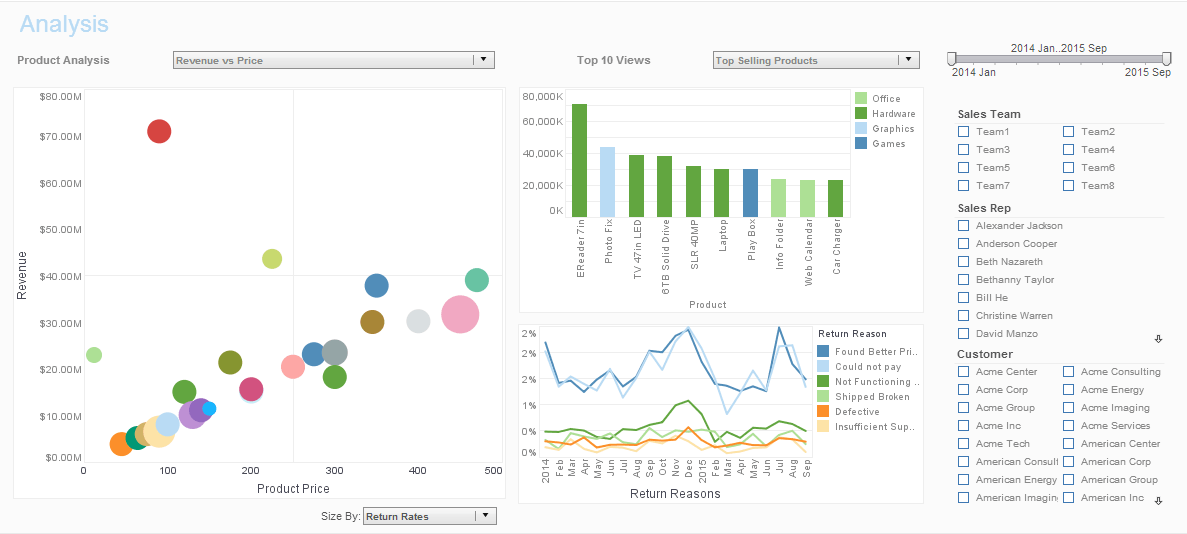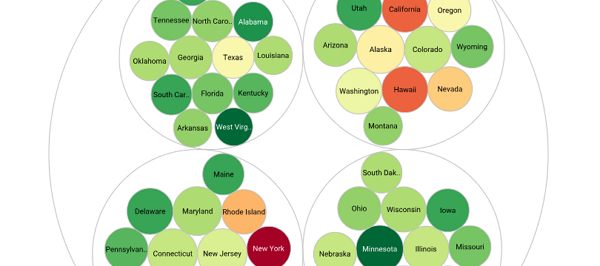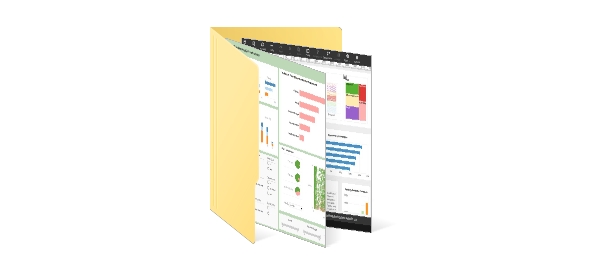Scenarios for Using Business Analysis Tools
When analyzing a business, management will commonly employ a selection of diverse tactics including SWOT analysis and quantitative analysis.
An ERP (enterprise resource planning) system can then be used as one of the many repositories of corporate data that needs to be analyzed.
SWOT analysis outlines a business's strengths, weaknesses, opportunities, and threats. It involves specifying the objective of the business venture or project and identifying the internal and external factors that impede or assist in achieving that objective.
Quantitative analysis works in financial matters using numerical techniques to plan and execute the next move.
Analyzing Data From Various Corporate Systems
InetSoft’s analysis tool can access a host of third party application data sources, for example:
| • salesforce.com | • Siebel CRM | • JD Edwards |
| • PeopleSoft | • SAP | • Baan |
Quantitative Analysis
InetSoft’s data visualization solution reduces the capacity for human error by providing direct access to corporate data, avoiding the problems associated with exporting data to spreadsheets for analysis purposes.
Since data remains in its original unaltered form, organizations are assured that the decisions and actions they take are based on sound information.
SWOT - Strengths, Weaknesses, Opportunities, Threats
InetSoft's easy-to-use quantitative analysis tools aid business managers in doing SWOT analysis. Several of the application’s functions such as brushing, data mashup, and the ability to drill down into the data help bring SWOT factors into focus.
Very quickly management can determine what is being done right and what should be improved upon.
How Does a News & Media Analytics Lead Use Business Analysis Tools?
A News & Media Analytics Lead plays a crucial role in leveraging business analysis tools to extract actionable insights from data within the news and media industry. Here's a detailed exploration of how such a professional may use business analysis tools:
- Audience Engagement Analysis:
- Tool Usage: Utilizes analytics tools to analyze user engagement metrics, such as click-through rates, time spent on articles, and social media interactions.
- Objective: Understands audience behavior to optimize content placement, improve user experience, and tailor content to meet audience preferences.
- Content Performance Monitoring:
- Tool Usage: Monitors content performance through analytics tools that track page views, shares, and comments.
- Objective: Identifies high-performing content, enabling data-driven decision-making for content creation, curation, and promotion strategies.
- Social Media Analytics:
- Tool Usage: Leverages social media analytics tools to track the reach, engagement, and sentiment of news content on various platforms.
- Objective: Understands social media trends, gauges public sentiment, and adjusts content strategy to maximize social media impact.
- Advertising Revenue Optimization:
- Tool Usage: Utilizes ad analytics tools to track the performance of advertising campaigns, click-through rates, and audience demographics.
- Objective: Maximizes ad revenue by optimizing ad placements, targeting specific demographics, and adjusting ad strategies based on performance data.
- Competitor Analysis:
- Tool Usage: Conducts competitive analysis using tools that track competitors' content performance, audience engagement, and social media presence.
- Objective: Identifies market trends, benchmarks against competitors, and formulates strategies to maintain or gain a competitive edge.
- Content Personalization:
- Tool Usage: Implements content recommendation engines and personalization tools.
- Objective: Enhances user experience by delivering personalized content recommendations based on user behavior, preferences, and historical data.
- Subscription and Audience Retention Analysis:
- Tool Usage: Utilizes analytics tools to analyze subscriber behavior, churn rates, and reasons for audience attrition.
- Objective: Develops strategies to improve audience retention, increase subscriber satisfaction, and optimize subscription models.
- Data-driven Editorial Decision-making:
- Tool Usage: Employs analytics tools to guide editorial decisions based on data insights.
- Objective: Ensures that editorial content aligns with audience interests, trending topics, and strategic business objectives.
- Predictive Analytics for Trend Forecasting:
- Tool Usage: Integrates predictive analytics tools to forecast trends in news consumption, content preferences, and audience behavior.
- Objective: Anticipates market trends, enabling proactive content creation and strategic decision-making.
- Data Visualization for Stakeholder Communication:
- Tool Usage: Utilizes data visualization tools to create dashboards and reports for communicating key performance indicators to stakeholders.
- Objective: Facilitates clear and concise communication of analytics findings to support informed decision-making among executives and team members.
More Articles About Tools for Lead Analysts
Add Scripted Content to Text - Right-click the third Text element, and select 'Properties'. In the Text Properties dialog box, select the Data tab. Select a data source (it doesn't matter which one, because we don't need the actual data), and press Create Expression...
Analyze Real Estate Client Feedback - Because dashboards are customizable, you can prioritize customer feedback data in your dashboard. Let's say you send a survey to each client after you close a deal, and they can rate their experience with you from 1 (poor) to 5 (excellent). The quantitative data you collect from your clients shows how they feel about you. This data essentially serves as a performance review by the people who are most qualified to give it. At the end of each...
Dynamic Supply Chain Models - Supply chain models are relatively volatile because of customer demands and supplier relationships. All of this can become overwhelming for those overseeing supply chain models. Regardless of what level a company is in on a supply chain model, using a dashboard that provides real-time business intelligence is crucial for efficient operations. A supply chain monitoring analytical system providing real-time insights can help schedule tasks appropriately...
Evaluate InetSoft's Marketing Lead Cleanup Tool - Are you looking for a good marketing lead cleanup tool? InetSoft's pioneering BI application has very flexible data manipulation capabilities so you can import a new lead file and perform automated tasks such as: flag malformed names or email addresses expand state/province abbreviations into full format map formal company names to shortened, colloquial names assign personas based on job titles...
Marketing Lead Trend Dashboard - This marketing lead trend dashboard gives marketing managers the metrics they need to monitor sales pipelines and optimize strategy. Lead count and source are tracked as well as conversion rates, with monthly change highlighted based on slider selection...
Quality Assurance Engineer Reporting Tool - A Quality Assurance Engineer at a textile mill plays a critical role in ensuring the production of high-quality textile products. Interactive reporting tools can significantly enhance their ability to monitor, manage, and improve quality control processes. Here's how a Quality Assurance Engineer can effectively use these tools: Real-time Monitoring: Interactive reporting tools provide real-time data on various quality metrics during the manufacturing process. Engineers can monitor parameters such as thread tension, fabric thickness...
Using a Highlight to Track Percent Change in Lead Volume - Tracking the percent change in lead count helps businesses measure their growth over time. By comparing the current lead count to the previous period, businesses can determine if they are growing or if they need to adjust their marketing strategies to attract more leads. Tracking the percent change in lead count helps businesses identify trends in their...




